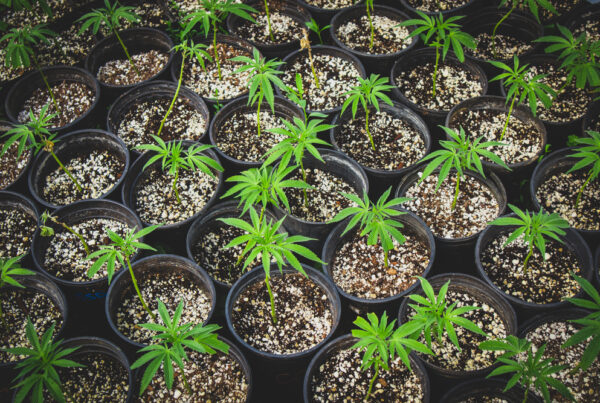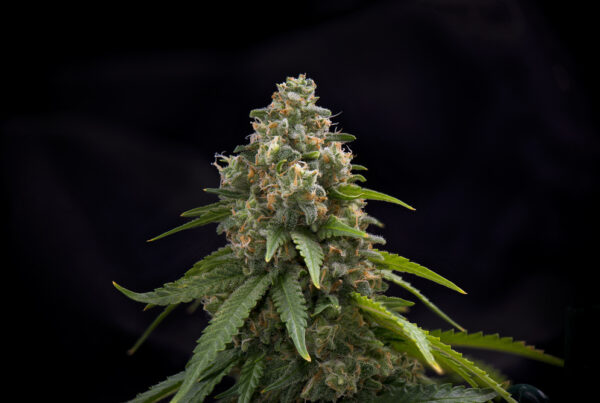In recent years, the use of cannabis has become increasingly popular, whether for medicinal purposes or recreational enjoyment. With this rise in cannabis consumption, there has also been a growing awareness of potential allergic reactions associated with the plant.
Understanding cannabis allergies is crucial for individuals who may experience symptoms after exposure to cannabis, as well as for healthcare professionals who need to diagnose and manage these allergies effectively. This blog post aims to provide a comprehensive overview of cannabis allergies, including their symptoms, causes, and management techniques.
Firstly, it is important to grasp what a cannabis allergy entails. Similar to other allergies, a cannabis allergy occurs when the immune system identifies certain compounds found in cannabis as harmful, triggering an allergic response. This reaction can range from mild symptoms, such as nasal congestion and skin irritation, to more severe reactions, including difficulty breathing and anaphylaxis.
Identifying the symptoms of a cannabis allergy is crucial for prompt diagnosis and treatment. Common symptoms may include sneezing, itching, hives, coughing, and even gastrointestinal issues. These symptoms can vary from person to person, making it essential to recognize the specific signs of a cannabis allergy.
Next, uncovering the potential causes of cannabis allergies is key to understanding why some individuals may develop an allergic reaction while others do not. One possible cause is the presence of specific proteins in cannabis, such as Can s 3 and Can s 4, which have been identified as potential allergens. Additionally, cross-reactivity with other plants, such as ragweed or latex, could also contribute to cannabis allergies in some individuals.
Diagnosing a cannabis allergy involves a combination of medical history evaluation and allergy tests. Allergy tests, including skin prick tests and blood tests, can help identify the specific allergens causing the reaction. Alongside these tests, a detailed medical history, including information about cannabis exposure and associated symptoms, aids in accurate diagnosis.
Managing and treating cannabis allergies often involves a multi-faceted approach. Avoidance of cannabis and its by-products is the most effective method of preventing allergic reactions. Lifestyle changes, such as avoiding areas where cannabis is used or grown, may also be necessary. Over-the-counter and prescription medications, such as antihistamines and nasal sprays, can help alleviate symptoms. In some cases, immunotherapy, a treatment that gradually exposes the body to increasing amounts of the allergen, may be considered as a long-term solution.
Living with a cannabis allergy can have a significant impact on daily life. Individuals with this allergy may need to navigate social situations where cannabis is present and educate their friends and family about their condition. Coping strategies, such as carrying antihistamines or wearing a medical alert bracelet, can help manage potential allergic reactions.
In conclusion, understanding cannabis allergies is essential in a society where cannabis use is becoming increasingly prevalent. By recognizing the symptoms, identifying the causes, and implementing appropriate management techniques, individuals with cannabis allergies can lead a fulfilling and allergy-free life. Stay tuned for the following sections, where we will delve deeper into each aspect of cannabis allergies and provide practical tips for diagnosis, management, and living with this condition.

Introduction: The Rising Trend of Cannabis Use and Potential Allergic Reactions
The rising trend of cannabis use has garnered significant attention in recent years, fueled by the growing acceptance and legalization of cannabis in various parts of the world. Cannabis, also known as marijuana, is derived from the Cannabis sativa plant and contains numerous compounds, including cannabinoids like THC (tetrahydrocannabinol) and CBD (cannabidiol).
With the increasing availability and accessibility of cannabis products, more individuals are incorporating cannabis into their daily lives. It is important to acknowledge that while cannabis may provide therapeutic benefits for some, it can also lead to potential allergic reactions in susceptible individuals.
The potential for allergic reactions to cannabis has become a topic of interest among healthcare professionals, researchers, and individuals who may experience adverse effects after exposure. Allergies are the result of the immune system’s overreaction to a specific substance, and cannabis is no exception.
Understanding the potential risks and allergic reactions associated with cannabis use is crucial for individuals considering its use, as well as for healthcare professionals who need to be aware of these possibilities when treating patients. By recognizing and addressing these concerns, individuals can make informed decisions about cannabis use, and healthcare providers can provide appropriate guidance and support.
In the upcoming sections, we will delve deeper into the various aspects of cannabis allergies, including the symptoms, causes, diagnosis, and management options. By examining these topics comprehensively, we aim to provide a comprehensive resource for individuals seeking to understand and navigate the complexities of cannabis allergies effectively.

Understanding Cannabis Allergies
Cannabis allergies are a specific type of allergic reaction that occurs in response to exposure to cannabis or its by-products. Like other allergies, they are caused by an immune system response to certain components found in cannabis. Understanding the basics of cannabis allergies is essential to recognize the symptoms, identify potential triggers, and seek appropriate management strategies.
What is a Cannabis Allergy?
A cannabis allergy is an allergic reaction triggered by exposure to cannabis or its derivatives. It occurs when the immune system mistakenly identifies certain compounds found in cannabis as harmful and initiates an immune response to protect the body. The immune system releases chemicals, such as histamines, which can cause a range of symptoms.
Common Symptoms of Cannabis Allergy
The symptoms of a cannabis allergy can vary from mild to severe and may manifest differently among individuals. Some common symptoms include:
- Respiratory Symptoms: These can include sneezing, nasal congestion, runny nose, coughing, wheezing, and difficulty breathing.
- Skin Reactions: Skin symptoms may include itching, redness, hives (urticaria), and eczema.
- Eye Irritation: Cannabis allergy can cause red, itchy, and watery eyes, as well as conjunctivitis (pink eye).
- Gastrointestinal Issues: Some individuals may experience nausea, vomiting, abdominal pain, or diarrhea after exposure to cannabis.
- Allergic Contact Dermatitis: Direct contact with cannabis plants or products can lead to localized skin reactions, such as rashes or blisters.
- Anaphylaxis (Rare): In severe cases, anaphylaxis may occur, which is a life-threatening allergic reaction characterized by difficulty breathing, a drop in blood pressure, and swelling of the throat.
Potential Causes of Cannabis Allergies
Cannabis allergies can be triggered by various components present in the plant. Some potential causes include:
- Pollen: Cannabis plants release pollen during their reproductive phase, which can be inhaled and trigger allergic reactions in sensitive individuals.
- Proteins: Certain proteins, such as Can s 3 and Can s 4, found in cannabis have been identified as potential allergens that can induce allergic responses.
- Cross-Reactivity: Individuals who are already allergic to other plants, such as ragweed, may experience cross-reactivity with cannabis due to similar protein structures.
While cannabis allergies are relatively rare compared to other allergies, they can still pose significant challenges for individuals who are sensitive to cannabis components. By understanding the symptoms and potential causes, individuals can take steps to manage their allergies effectively. In the next section, we will explore the process of diagnosing cannabis allergies and the available tests to identify the specific triggers.

Diagnosing a Cannabis Allergy
Diagnosing a cannabis allergy involves a combination of medical history evaluation, symptom analysis, and allergy tests. Proper diagnosis is essential to confirm the presence of a cannabis allergy, identify specific triggers, and develop an appropriate management plan.
Allergy Tests Available
- Skin Prick Test: This commonly used test involves placing a small amount of cannabis extract or allergen on the skin and pricking or scratching the surface. If a person is allergic, a small raised bump, known as a wheal, will appear at the test site.
- Blood Test: A blood test, such as the specific IgE (Immunoglobulin E) test, can measure the levels of antibodies produced in response to cannabis allergens. Elevated levels of specific IgE antibodies indicate an allergic reaction.
Role of Medical History in Diagnosis
A thorough medical history is crucial in diagnosing a cannabis allergy. The healthcare provider will inquire about symptoms experienced after cannabis exposure, the frequency and duration of symptoms, and any other relevant information. Specific questions about exposure to cannabis, including smoking, vaping, or handling cannabis products, will also be asked.
Interpreting the Results of Allergy Tests
The results of allergy tests, such as the skin prick test or blood test, need to be interpreted by a qualified healthcare professional. A positive result indicates an allergic reaction to cannabis, but it does not necessarily correlate with the severity of symptoms. The healthcare provider will consider the patient’s medical history, symptomatology, and other factors to determine the significance of the test results.
It is important to note that in some cases, allergy tests may yield false-negative or false-positive results. False negatives can occur if the person being tested has recently taken antihistamines or if the test does not include the specific allergens causing the reaction. False positives, on the other hand, may occur due to cross-reactivity with other allergens or non-specific reactions.
A comprehensive evaluation, combining medical history, symptom analysis, and allergy testing, is crucial for an accurate diagnosis of cannabis allergies. Once diagnosed, individuals can move forward with developing an effective management plan to minimize the risk of allergic reactions. In the next section, we will explore various strategies for managing and treating cannabis allergies.
Managing and Treating Cannabis Allergies
Managing and treating cannabis allergies involves a comprehensive approach that focuses on avoidance, lifestyle changes, and the use of medications when necessary. By implementing these strategies, individuals with cannabis allergies can minimize their exposure to allergens and effectively manage their symptoms.
Avoidance and Lifestyle Changes
- Avoidance of Cannabis: The most effective way to prevent allergic reactions is to completely avoid exposure to cannabis and its by-products. This includes avoiding smoking or vaping cannabis, being in areas where cannabis is being used, and handling cannabis products.
- Environmental Control: Individuals with cannabis allergies should take steps to minimize their exposure to cannabis pollen or dust. This may involve keeping windows closed during peak pollen seasons, using air purifiers with HEPA filters, and regularly cleaning surfaces to remove any residual pollen or dust.
- Educating Others: It is important to educate friends, family, and coworkers about your cannabis allergy to ensure they understand the importance of avoiding cannabis use in your presence. Clear communication can help prevent accidental exposure and reduce the risk of allergic reactions.
Over-the-Counter and Prescription Medications
- Antihistamines: Over-the-counter antihistamines, such as cetirizine or loratadine, can help alleviate mild allergy symptoms like sneezing, itching, and runny nose.
- Nasal Sprays: Corticosteroid nasal sprays, like fluticasone or budesonide, can reduce nasal inflammation and alleviate congestion, sneezing, and itching.
- Eye Drops: Over-the-counter eye drops containing antihistamines or mast cell stabilizers can provide relief from itchy, red, and watery eyes.
- Topical Creams: For individuals with allergic contact dermatitis or skin reactions, topical corticosteroid creams or ointments can help reduce inflammation and relieve itching.
- Epinephrine Auto-Injector: Individuals who experience severe allergic reactions or anaphylaxis may need to carry an epinephrine auto-injector (e.g., EpiPen) for emergency use. This should be prescribed by a healthcare professional and used as directed.
Immunotherapy: Can it Help?
Immunotherapy, also known as allergy shots or allergen immunotherapy, may be considered for individuals with severe and persistent cannabis allergies. This treatment involves regular injections of gradually increasing amounts of the allergen to desensitize the immune system over time. However, it is important to note that immunotherapy for cannabis allergies is still an emerging field and more research is needed to establish its efficacy.
Managing and treating cannabis allergies requires a proactive approach that combines avoidance strategies, lifestyle modifications, and appropriate medications when necessary. By working closely with a healthcare professional, individuals with cannabis allergies can develop a personalized management plan that helps minimize the risk of allergic reactions and improves their quality of life. In the next section, we will explore the impact of living with a cannabis allergy on daily life and discuss coping strategies.

Living with a Cannabis Allergy
Living with a cannabis allergy can have a significant impact on daily life, as it requires individuals to navigate various situations where cannabis may be present. It is important to develop coping strategies, educate friends and family, and take steps to manage potential allergic reactions effectively.
Impact on Daily Life
- Social Situations: Individuals with a cannabis allergy may need to be cautious in social settings where cannabis use is common, such as parties, concerts, or gatherings. They may need to communicate their allergy to hosts or friends and request a cannabis-free environment.
- Work Environment: In workplaces where cannabis use is allowed or common, individuals with a cannabis allergy may need to discuss their condition with their employer or HR department. Accommodations, such as designated cannabis-free areas or policies, can help minimize the risk of exposure.
- Travel Considerations: Traveling to regions where cannabis is legal or commonly used may require additional planning and precautions. It is important to research local laws and regulations, as well as inform travel companions or accommodations about the allergy.
Coping Strategies
- Carry Medications: It is advisable for individuals with a cannabis allergy to carry their prescribed medications, such as antihistamines or epinephrine auto-injectors, at all times. These can provide immediate relief in case of accidental exposure or allergic reactions.
- Allergy Bracelet or Card: Wearing a medical alert bracelet or carrying an allergy card can help communicate the cannabis allergy to others, especially in emergency situations where the individual may not be able to speak for themselves.
- Allergy Action Plan: Working with a healthcare professional to develop an allergy action plan can provide guidance on managing potential reactions and knowing when to seek emergency medical care.
Educating Friends and Family
- Communication: Openly discussing the cannabis allergy with close friends and family members is crucial. They need to understand the seriousness of the allergy and the potential risks involved. Educate them on how to recognize and respond to an allergic reaction.
- Support and Understanding: Seek support from friends and family members who can provide a safe and supportive environment. They can help create a cannabis-free space and assist in navigating social situations where cannabis may be present.
- Allergy Education: Encourage friends and family to learn about cannabis allergies and the necessary precautions to take when around individuals with this condition. Providing resources or directing them to reliable information can enhance their understanding.
Living with a cannabis allergy requires proactive management and effective communication. By implementing coping strategies, educating loved ones, and taking necessary precautions, individuals with a cannabis allergy can lead fulfilling lives while minimizing the risk of allergic reactions.






